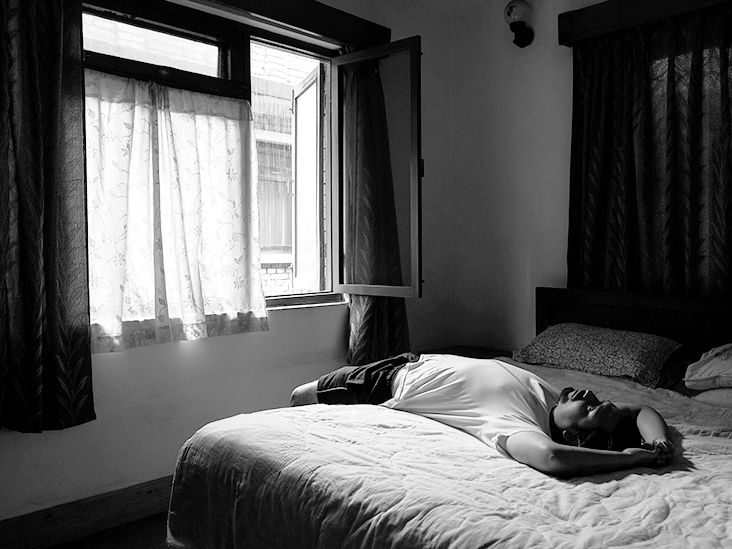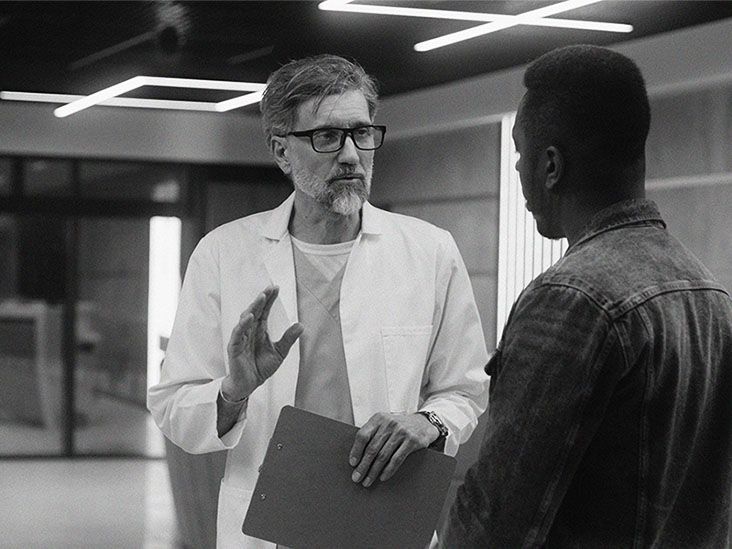What is nonseminoma testicular cancer? In a nutshell, it's a fastgrowing germcell tumor that typically appears in men between 15 and 35years old. When caught early, the cure rate tops 90%.
What should I look out for? A painless lump, a feeling of heaviness, or a subtle swelling in the scrotum. Any new change should prompt a doctor's visit within two weeks no need to wait and wonder.
Quick Answer Snapshot
Imagine you're doing a quick selfcheck after a shower and feel a firm bump. You pause, maybe a little uneasy, and wonder: "Is this serious?" The answer is: it could be nonseminoma, but it could also be harmless. The only way to know is to get a professional ultrasound. Early detection means treatment options are plentiful and survival rates are excellent.
What Is Nonseminoma?
Definition & classification
Nonseminoma belongs to the family of germcell tumors (also called germ cell tumor) that arise from cells that should become sperm. Unlike seminoma, which grows slowly, nonseminoma spreads more quickly and can produce tumor markers like AFP and hCG. The main subtypes are:
- Embryonal carcinoma
- Yolksac tumor
- Choriocarcinoma
- Teratoma
- Mixedhistology (a combination of the above)
How it develops
Most start as germcell neoplasia in situ (GCNIS), a precancerous condition that can turn into an invasive tumor within five years. A hallmark genetic change is extra copies of chromosome12p something all nonseminomas share.
Expert tip
"Because nonseminoma can spread rapidly, catching it before it leaves the testis is the single most important factor for a cure," says Dr.Lena Ortiz, a urologic oncologist at the National Cancer Institute.
Recognising Symptoms Early
Typical warning signs
The most common clue is a painless, firm nodule inside the testis. Around 90% of men notice this first. Other symptoms you might feel include:
- Heaviness or a sense of "fullness" in the scrotum
- A dull ache that may radiate to the lower abdomen
- Unexpected breast tissue growth (gynecomastia) caused by hormonelike substances some tumors release
Redflag signs that hint at spread
If the cancer has moved beyond the testis, you might experience:
- Persistent cough or coughing up blood lungs are a common site for metastasis
- Back pain or a swollen lower back retroperitoneal lymph nodes might be involved
- Unexplained weight loss, night sweats, or fatigue
Selfexam checklist
| Step | What to do |
|---|---|
| 1. Visual check | Look for any swelling or asymmetry while standing. |
| 2. Palpate gently | Use both hands to feel each testis from the top down. Note any firm or irregular spots. |
| 3. Compare | Feel both sides; they don't have to be identical, but a noticeable difference deserves a call to the doctor. |
| 4. Repeat monthly | Make it a habit, especially after a shower when the skin is relaxed. |
Realworld example
Jamal, a 24yearold college student, felt a small lump during his routine selfexam. He booked a urology appointment the next day, got an ultrasound, and was diagnosed with a stageI nonseminoma. After a quick orchiectomy, his doctor put him on active surveillance. He's now cancerfree and uses his story to remind friends to "check it out" before it becomes "checkoutlater."
How Doctors Diagnose
History and physical exam
Doctors start with a few key questions: have you ever had an undescended testicle, a family history of testicular cancer, or fertility issues? A careful physical exam follows, focusing on size, consistency, and tenderness.
Lab markers that speak volumes
Three blood tests give a lot of clues:
- AFP (alphafetoprotein) raised in about half of nonseminomas, but never in pure seminoma.
- hCG (human chorionic gonadotropin) can be elevated when choriocarcinoma or embryonal carcinoma is present.
- LDH (lactate dehydrogenase) a nonspecific marker that roughly mirrors tumor burden.
Imaging workup
First, a scrotal ultrasound visualises the lump with over 99% sensitivity. If the ultrasound confirms a tumor, doctors move on to staging scans:
- Contrastenhanced CT of the abdomen and pelvis to look at retroperitoneal nodes.
- Chest CT (preferable to a plain Xray) for lung involvement.
- Brain MRI if hCG levels are very high, because the brain can be a hidden sanctuary site.
Imaging comparison
| Modality | Strengths | Limitations |
|---|---|---|
| Ultrasound | Quick, no radiation, >99% sensitivity | Cannot stage beyond the testis |
| CT (abdomen/pelvis) | Excellent for lymph node assessment | Radiation exposure |
| MRI (brain) | Best for softtissue detail, no radiation | Higher cost, less widely available |
Credible sources you can trust
All the diagnostic numbers above come from the NCCN Guidelines (2024) and recent peerreviewed studies on tumor marker accuracy.
Staging and Prognosis
AJCC TNM breakdown
Staging tells us how far the tumor has traveled:
- StageI confined to the testis. Fiveyear diseasespecific survival (DSS) is about 98%.
- StageII involves retroperitoneal lymph nodes. Fiveyear DSS drops to roughly 92%.
- StageIII distant metastases (lung, liver, brain). Survival varies by risk group: low risk 92%, intermediate 80%, high risk 48%.
Key prognostic factors
- Postorchiectomy serum marker levels if AFP or hCG remain high, the outlook is less favorable.
- Histology the presence of choriocarcinoma often predicts a more aggressive course.
- Size of residual mass after chemotherapy larger masses may harbor viable tumor.
Survival chart by stage
| Stage | 5year DSS | Typical treatment |
|---|---|---|
| I (lowrisk) | 98% | Surveillance or one cycle BEP |
| II (nodepositive) | 92% | BEP 34 + possible RPLND |
| III (metastatic, low risk) | 92% | BEP 4 surgery |
| III (high risk) | 48% | Intensive chemo, surgery, clinical trial consideration |
Treatment Pathways Overview
Radical inguinal orchiectomy
This is the first step for almost every case. The surgeon removes the affected testis through an incision in the groin (not the scrotum) to avoid spreading cancer cells via scrotal lymphatics. The removed tissue is then examined under a microscope to confirm the exact histology and stage.
Chemotherapy the workhorse
The standard regimen is BEP (Bleomycin, Etoposide, Cisplatin) given over three to four cycles. It attacks rapidly dividing cells and has turned a oncefatal disease into a largely curable one. If bleomycin is a concernsay you have lung issuesdoctors may switch to VIP (Etoposide, Ifosfamide, Cisplatin).
Retroperitoneal Lymph Node Dissection (RPLND)
RPLND is a surgical removal of lymph nodes behind the abdomen. It's usually considered when there's a residual mass larger than 1cm after chemotherapy and tumor markers have normalized, or when the initial stage was Ihighrisk and the patient chose immediate surgery instead of surveillance.
Active surveillance for stageI
If your tumor was confined to the testis and the pathology shows lowrisk features, you might skip immediate chemo. Instead, you'll undergo a strict followup schedule:
- Serum markers and CT scan at 3months
- Repeat at 12months
- Every 612months for the next 45years
About 35% of men on surveillance eventually need treatment, but overall survival stays skyhigh at 98%.
When radiation is used
Radiation isn't a frontline option for nonseminoma, but it can be employed for isolated metastatic lesions (e.g., a solitary brain metastasis) where surgery isn't feasible.
Sideeffect matrix
| Side effect | Typical impact | Management |
|---|---|---|
| Fertility loss | Temporary or permanent azoospermia | Sperm banking before treatment |
| Nephrotoxicity | Kidney function decline | Hydration, dose adjustment |
| Ototoxicity | Hearing loss or tinnitus | Baseline audiograms, monitoring |
| Pulmonary fibrosis | Bleomycinrelated lung scarring | Pulm function tests, limit bleomycin dose |
Patient story
Mark, 29, opted for surveillance after his stageI tumor was removed. Nine months later, a rising hCG signaled a tiny residual disease. He then completed three cycles of BEP and is now back to hiking, feeling grateful that the "watchandwait" plan let him avoid chemo until it was truly needed.
Balancing Benefits and Risks
Fertility preservation
Because chemotherapy and even surgery can affect sperm production, most specialists recommend sperm banking before any treatment begins. Even if you think you might want kids later, a simple freezeandstore session costs a few hundred dollars and can make future family planning far less stressful.
Longterm survivorship issues
- Hormone balance The remaining testis usually compensates, but some men develop low testosterone and may need replacement therapy.
- Secondary cancers Rare, but radiation or certain chemo agents can raise the risk of later malignancies.
- Psychosocial impact Losing a testicle can affect body image and sexuality. Many men benefit from counseling or support groups.
When to seek urgent care
If you experience sudden, severe scrotal pain (possible torsion) or develop new respiratory symptoms while on chemo, call your doctor right away. Early intervention can prevent complications that are far harder to treat later.
Followup checklist
- Every 36months: serum AFP, hCG, LDH
- Annual CT (or as directed) to monitor retroperitoneal nodes
- Discuss prosthetic testicle if appearance concerns you
- Annual physical with your urologist for atleast 5years
Helpful Resources & Support
Finding reliable information and community can make the journey feel less lonely. Here are a few trusted places:
- The American Urological Association provides plainlanguage guides on diagnosis and treatment.
- The American Cancer Society hosts uptodate statistics and survivorship resources.
- Support groups such as the Testicular Cancer Society connect you with fellow survivors and caregivers.
- If you're considering sperm banking, look for accredited spermbanking centers in your area.
Final Key Takeaways
Nonseminoma testicular cancer can sound intimidating, but the facts are reassuring: it mostly affects young men, it often shows up as a simple lump, and when caught early the cure rate exceeds 90%. Knowing the warning signs, getting prompt imaging, and understanding your treatment optionswhether it's surgery, chemotherapy, surveillance, or a mixempowers you to make the best decisions for your health.
Remember, you're not alone. Talk to a trusted urologist, discuss fertility preservation, lean on support groups, and keep up with scheduled followups. If you ever feel uncertain, reach outpeople who care are just a message away.
FAQs
What age group is most at risk for non‑seminoma testicular cancer?
It most commonly affects men between 15 and 35 years old, although it can occur outside this range.
How can I tell if a lump is harmless or a sign of non‑seminoma?
A painless, firm nodule that doesn’t go away after a few weeks warrants an urgent scrotal ultrasound; only imaging can confirm whether it’s cancerous.
What blood tests help diagnose non‑seminoma?
Doctors check AFP (alpha‑fetoprotein), β‑hCG (human chorionic gonadotropin) and LDH (lactate dehydrogenase); abnormal levels often point to non‑seminoma sub‑types.
Is chemotherapy always required after orchiectomy?
No. For stage I low‑risk disease many men choose active surveillance and only receive chemotherapy if markers rise or a residual mass appears.
Can I still have children after treatment?
Yes, but chemotherapy and surgery can affect sperm production. Sperm banking before any treatment is strongly recommended for those who may want children later.
Disclaimer: This article is for informational purposes only and does not constitute medical advice. Always consult with a healthcare professional before starting any new treatment regimen.
Related Coverage
Find ways to protect testicular cancer fertility with sperm banking, onco‑TESE and monitoring, keeping future family plans alive....
Spot vital testicular cancer signs – learn the five key symptoms, when to see a doctor, and a quick self‑exam to catch issues....
Get detailed info on the most common testicular cancer treatment, side effects, fertility options, and recovery expectations....
Chop and go nutrition meal prep makes eating healthy fast and easy. Do some simple prep on weekends to set up easy meals all week long. Learn tips and ideal foods....
Explore the latest testicular cancer survival stats, key factors that affect outcomes, and practical steps you can take now....
Orchiectomy recovery: 2‑3 weeks for tasks, swelling eases by week 4. Get a plan for pain control, wound care, and return to work....
Learn how a testicular cancer hereditary family history boosts risk, the main genes involved, and easy steps for early detection....
non-seminoma testicular cancer often shows a painless lump in men 15‑35; learn symptoms, tests, treatment options and cure rates....
Learn when testicular cancer age peaks, key symptoms, and how early detection at any age can achieve over 95% cure rates....








